Medical device ordering on VA.gov
Case study | May 2020
Millions of veterans rely on VA for their hearing aid batteries and accessories, but face roadblocks ordering the products they need.
My role
Co-designer through end-to-end process: discovery, user research, design, testing, support through launch.
The team
Leah Keeler, Product Manager
Rebecca Walsh, UX Designer
Brad Conley, Frontend Engineer
Mahariel Rosario, Frontend Engineer
Cameron Testerman, Backend Engineer
Veterans are able to order their items online, so why aren’t they?
There are multiple ways for veterans to place an order for their medical devices: mail-in card, over the phone, and online - kind of. My team was brought onto the project to transfer the online ordering tool from an old VA website onto VA.gov. However, we also wanted to improve the tool so veterans are motivated to quickly order the items they need online.
Our goals
Understand why very few veterans place online orders through the existing tool
Create an experience that empowers veterans to transition from other ordering methods to online ordering
Align with 508 compliancy by designing the online medical device ordering experience to be more accessible and user-friendly for all Veterans
These affinity diagrams were created after conducting qualitative interviews with veterans to uncover common themes.
Speaking with veterans about their experiences
I began by conducting qualitative interviews to uncover how veterans prefer to place orders and what their pain points are. We were originally scoped to include hearing aid batteries, accessories, and prosthetic socks in the online catalogue, but it became apparent that only 1% of all orders are for prosthetic socks. To make the most impact, the team decided to focus on hearing aid batteries and accessories for the MVP.
While veterans were interested in placing online orders, the number of online orders was extremely low because accessory products were unavailable. A majority of hearing aids need accessories, so those items would need to be added to the online catalogue in order to increase the number of online orders.
Presenting wireflows to stakeholders to ensure business requirements were met
Multiple wireflow iterations were presented to key stakeholders to validate that business needs were met and data requirements could be fulfilled through the API. Our stakeholders greatly valued being included in the process.
The final MVP prototype
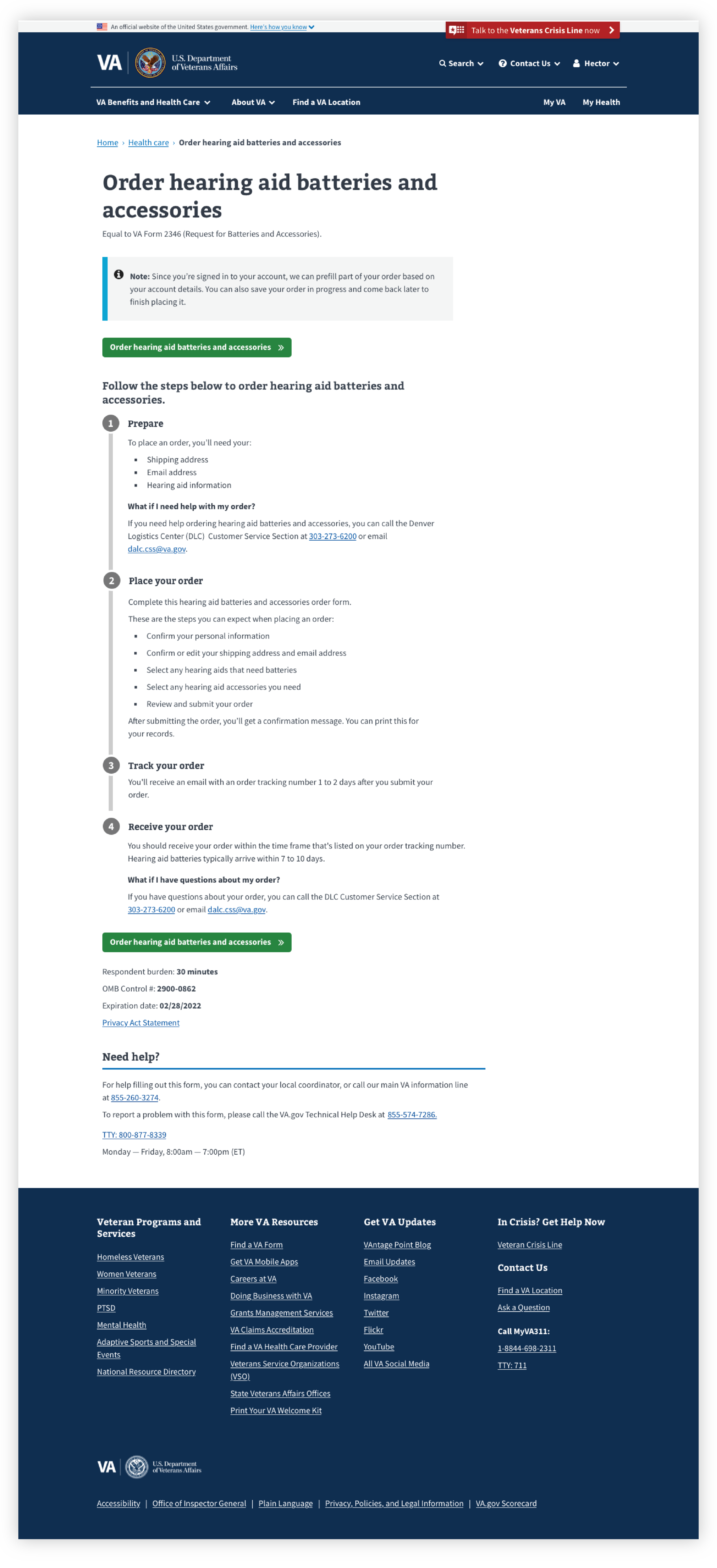
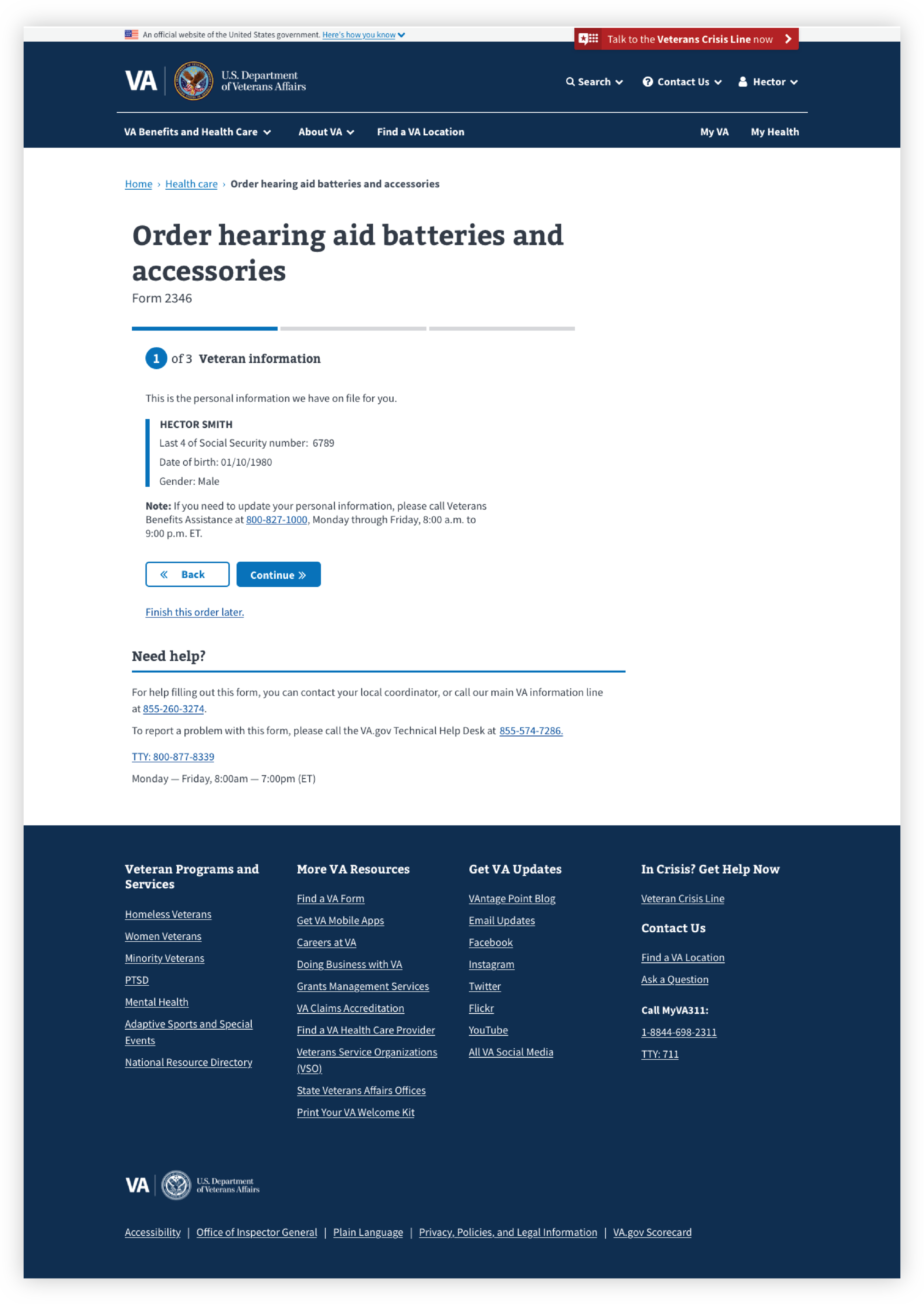
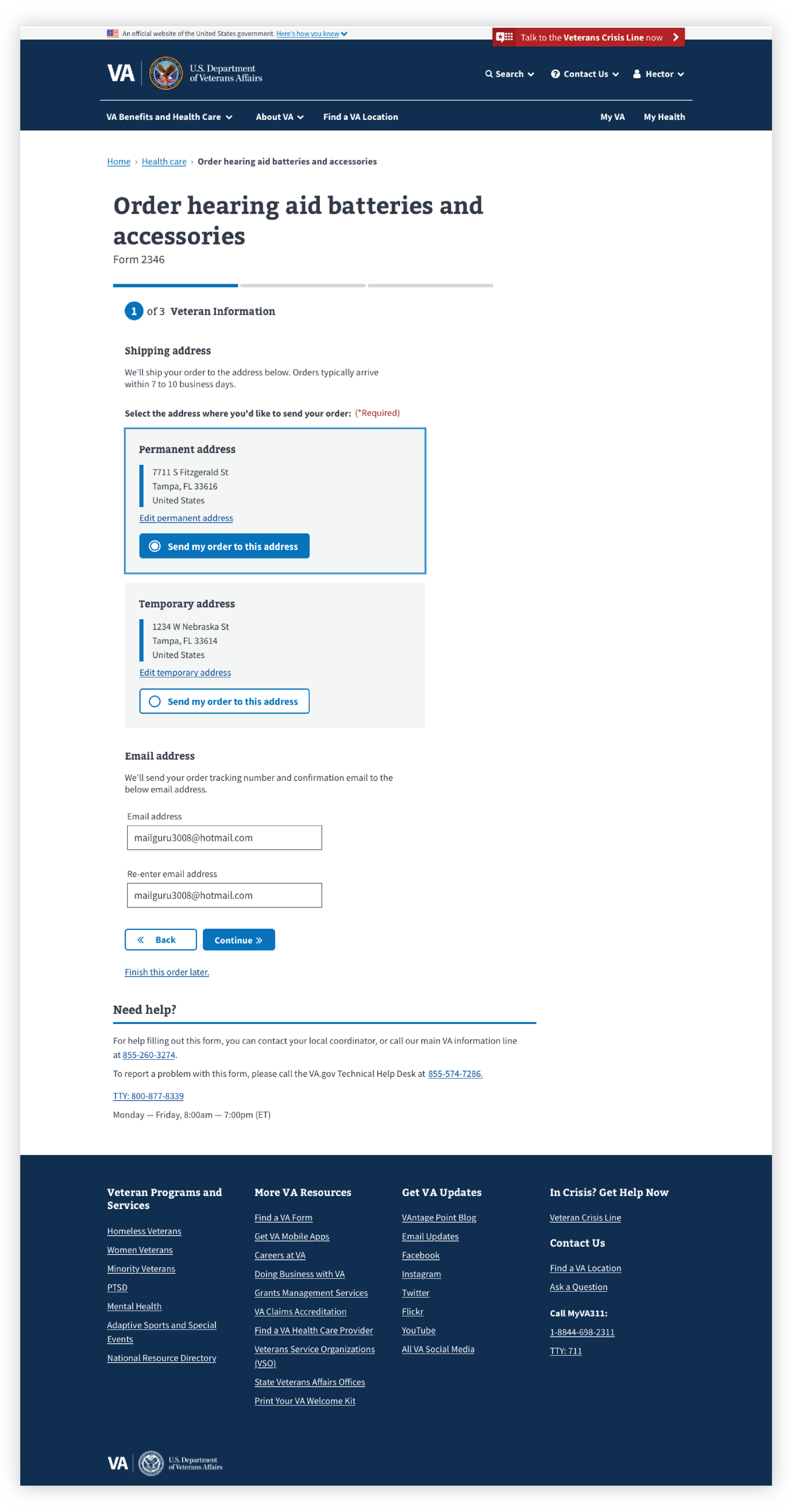
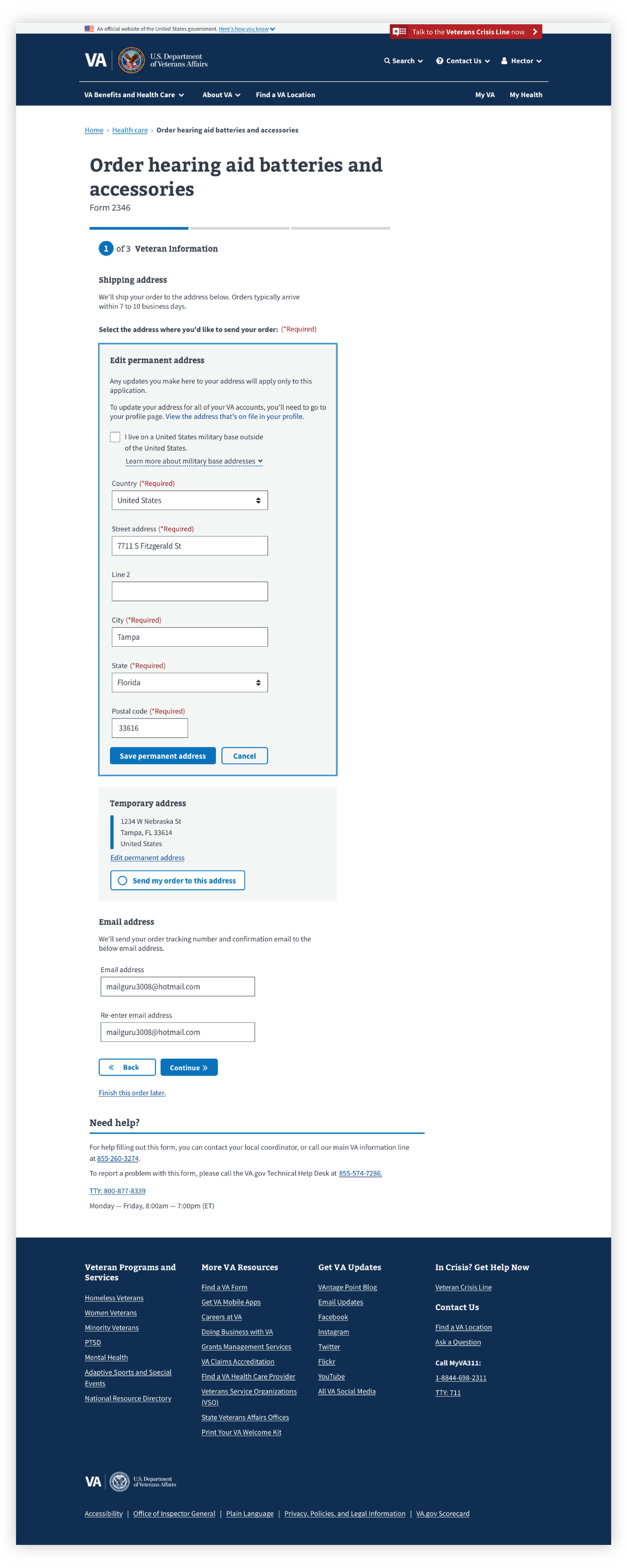
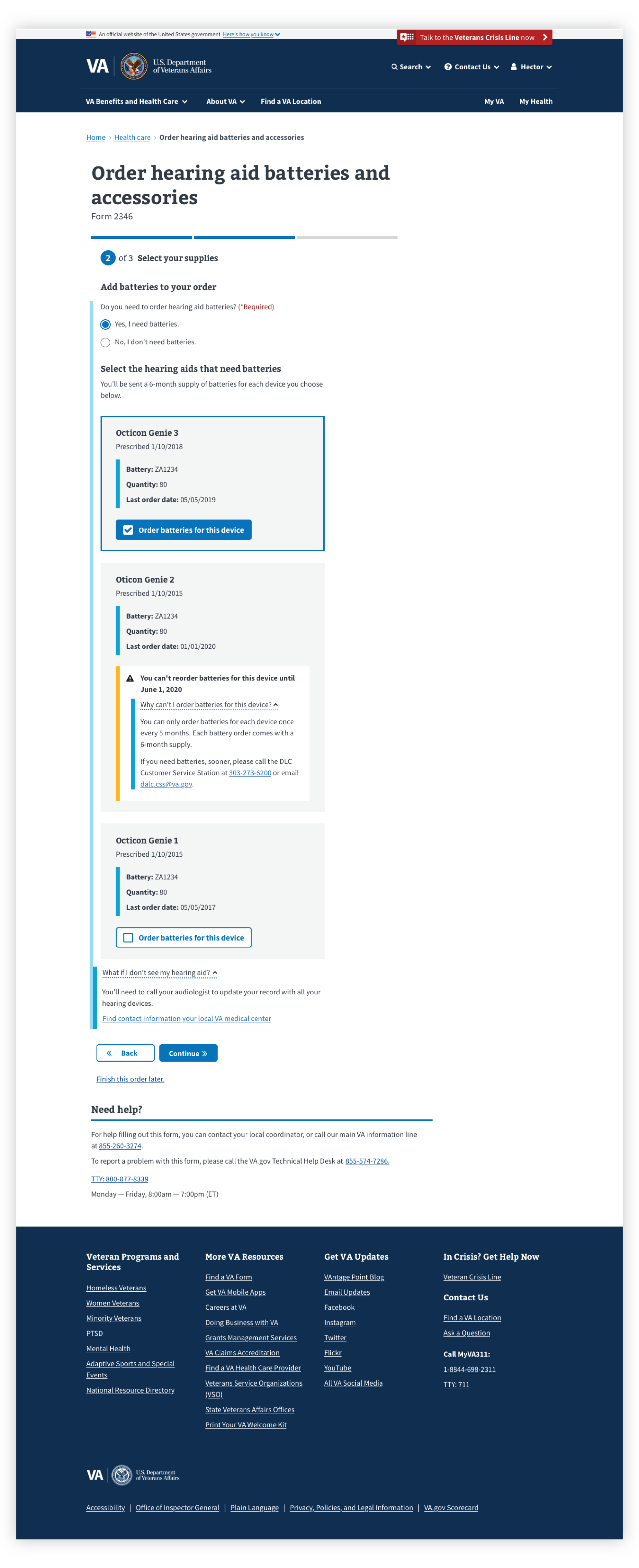
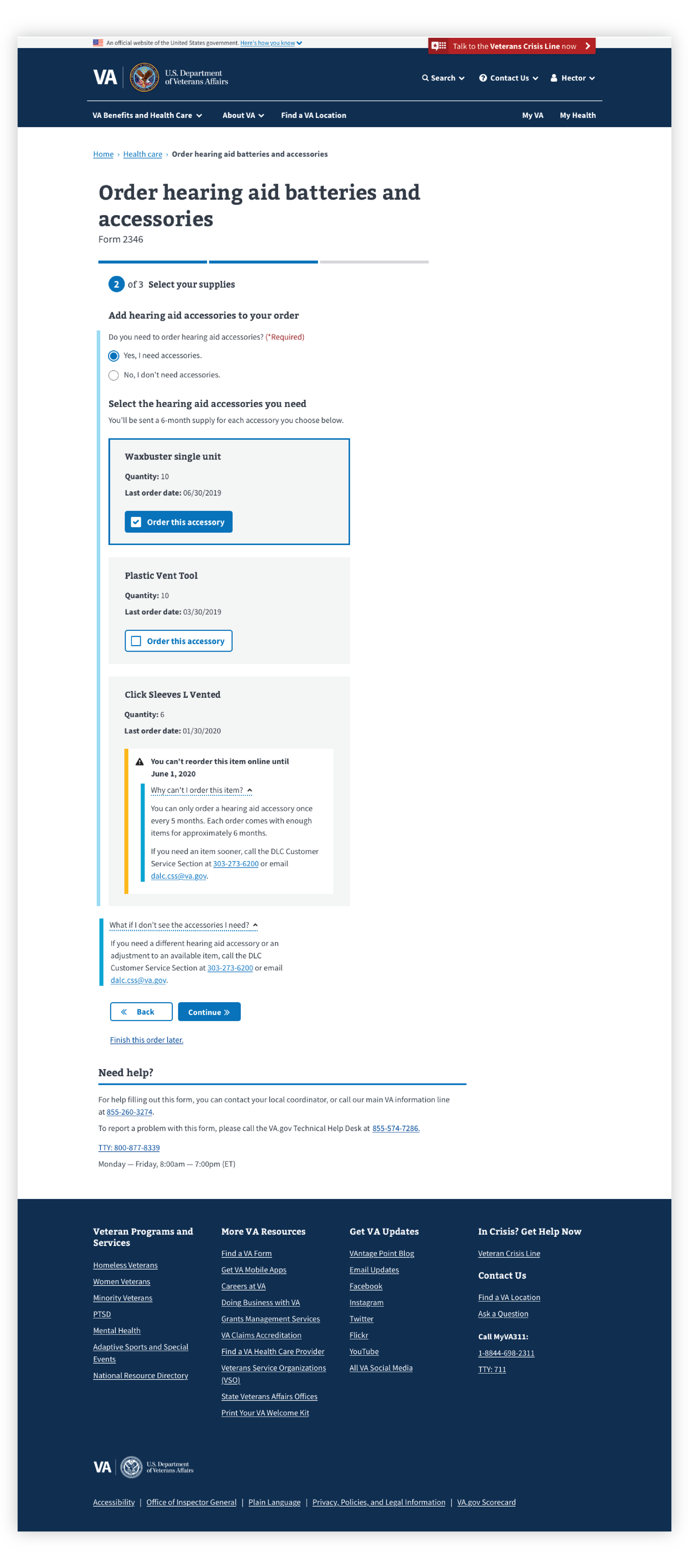
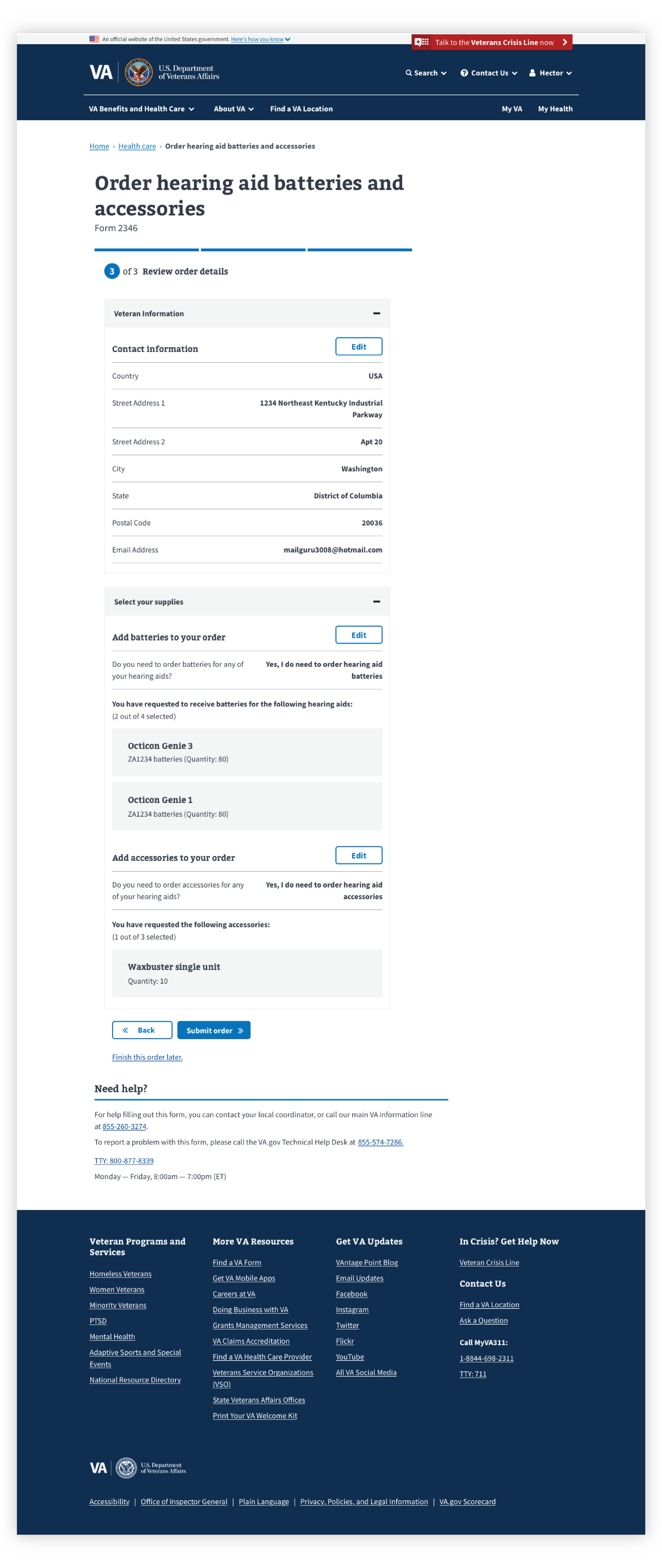
Ensuring the design supports Veterans in quickly ordering the products they rely on
The prototype was finalized in Sketch and exported to UXPin so interactive states could be created. This allowed for a more realistic experience during usability testing. I conducted a week-long usability study where 10 participants were led through tasks including where they’d expect to find the tool on the site and placing an order using the prototype.
I discovered that participants were easily able to select and edit their personal information, select their items, and submit their order. However, participants struggled to navigate from the VA.gov homepage to the product’s content page.
Next steps
The feedback received during usability testing has been incorporated into the design and has launched. We’re looking into conducting additional IA research based on Veterans experiencing challenges locating the tool. We received tremendously positive feedback from our stakeholders, who have reached out to us to expand the product to incorporate prosthetic socks.



